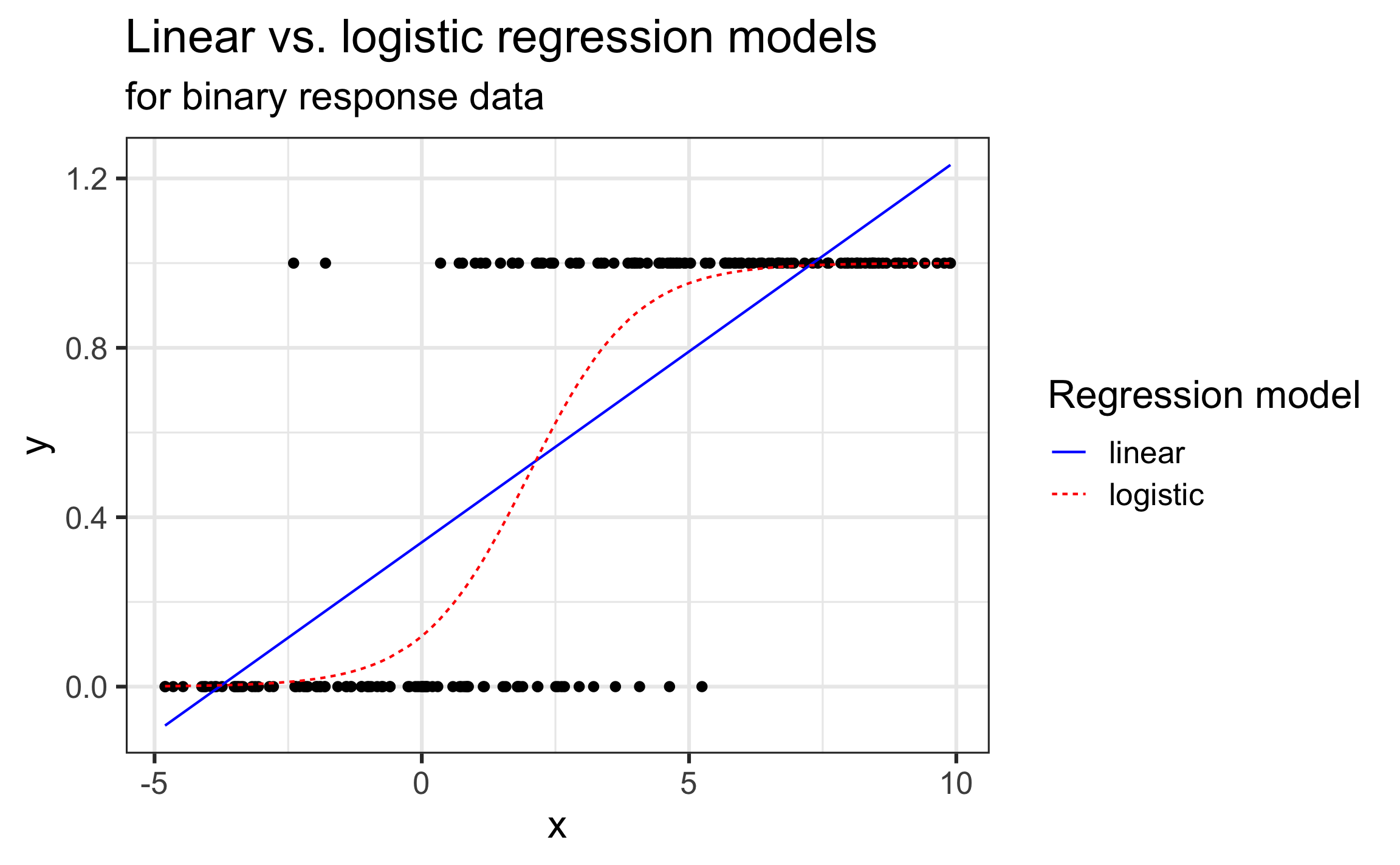03:00
Logistic regression
Feb 05, 2024
Topics
Identify Bernoulli and binomial random variables
Write GLM for binomial response variable
Interpret the coefficients for a logistic regression model
Basics of logistic regression
Bernoulli + Binomial random variables
Logistic regression is used to analyze data with two types of responses:
- Binary: These responses take on two values success
- Binomial: Number of successes in a Bernoulli process,
In both instances, the goal is to model
Binary vs. Binomial data
For each example, identify if the response is a Bernoulli or Binomial response:
- Use median age and unemployment rate in a county to predict the percent of Obama votes in the county in the 2008 presidential election.
- Use GPA and MCAT scores to estimate the probability a student is accepted into medical school.
- Use sex, age, and smoking history to estimate the probability an individual has lung cancer.
- Use offensive and defensive statistics from the 2017-2018 NBA season to predict a team’s winning percentage.
Logistic regression model
- The response variable,
- Use the model to calculate the probability of success
- When the response is a Bernoulli random variable, the probabilities can be used to classify each observation as a success or failure
Logistic vs linear regression model

Graph from BMLR Chapter 6
Logit link
Bernoulli and Binomial random variables can be written in one-parameter exponential family form,
Bernoulli
Binomial
They have the same canonical link
Assumptions for logistic regression
The following assumptions need to be satisfied to use logistic regression to make inferences
1️⃣
2️⃣
3️⃣
4️⃣
COVID-19 infection prevention practices at food establishments
Researchers at Wollo Univeristy in Ethiopia conducted a study in July and August 2020 to understand factors associated with good COVID-19 infection prevention practices at food establishments. Their study is published in Andualem et al. (2022) .
They were particularly interested in the understanding implementation of prevention practices at food establishments, given the workers’ increased risk due to daily contact with customers.
The data
“An institution-based cross-sectional study was conducted among 422 food handlers in Dessie City and Kombolcha Town food and drink establishments in July and August 2020. The study participants were selected using a simple random sampling technique. Data were collected by trained data collectors using a pretested structured questionnaire and an on-the-spot observational checklist.”
Response variable
“The outcome variable of this study was the good or poor practices of COVID-19 infection prevention among food handlers. Nine yes/no questions, one observational checklist and five multiple choice infection prevention practices questions were asked with a minimum score of 1 and maximum score of 25. Good infection prevention practice (the variable of interest) was determined for food handlers who scored 75% or above, whereas poor infection prevention practices refers to those food handlers who scored below 75% on the practice questions.”
Results
Interpreting the results
Is the response a Bernoulli or Binomial?
What is the strongest predictor of having good COVID-19 infection prevention practices?
- It’s often unreliable to look answer this question just based on the model output. Why are we able to answer this question based on the model output in this case?
Describe the effect (coefficient interpretation and inference) of having COVID-19 infection prevention policies available at the food establishment.
The intercept describes what group of food handlers?
04:30
References

